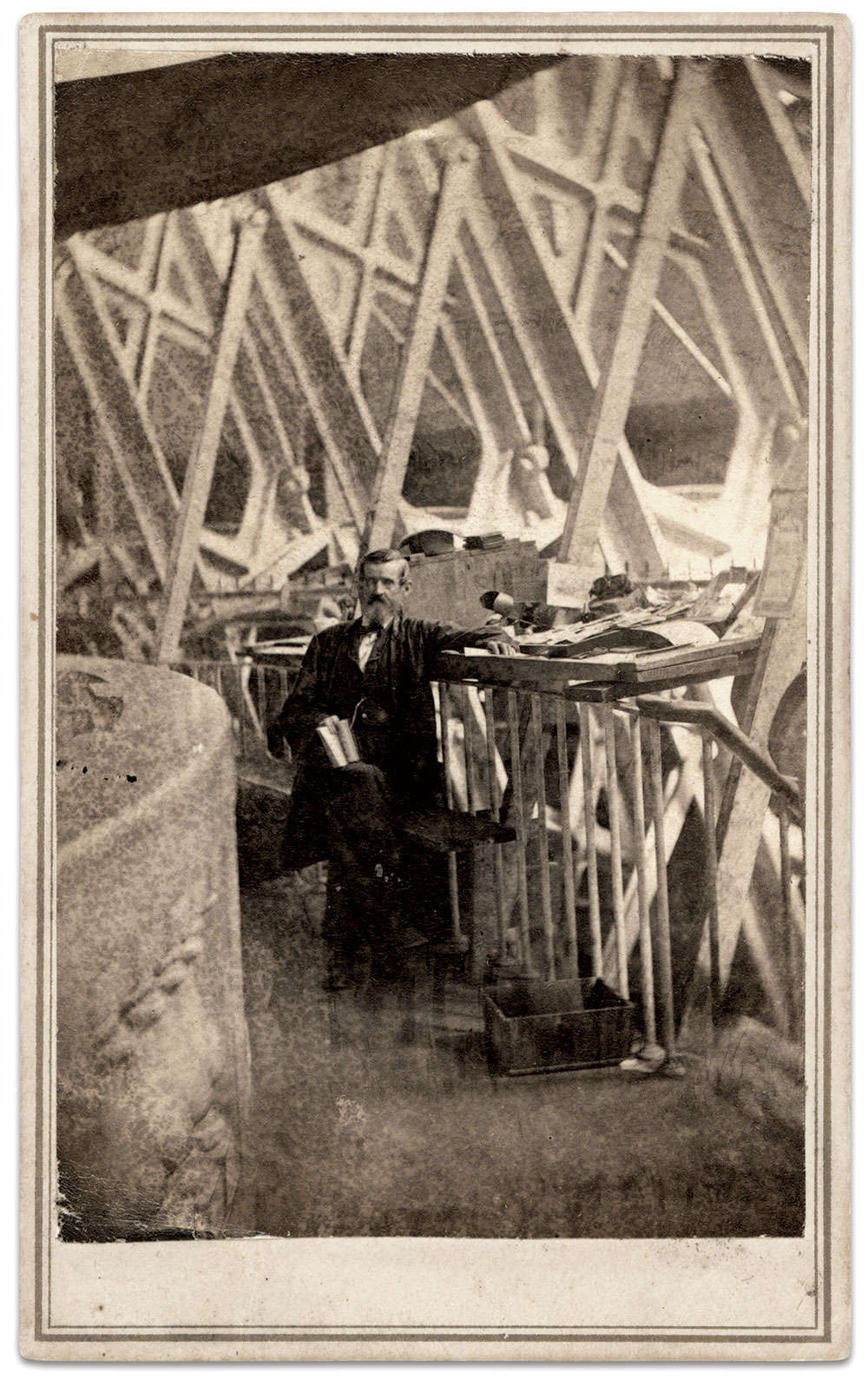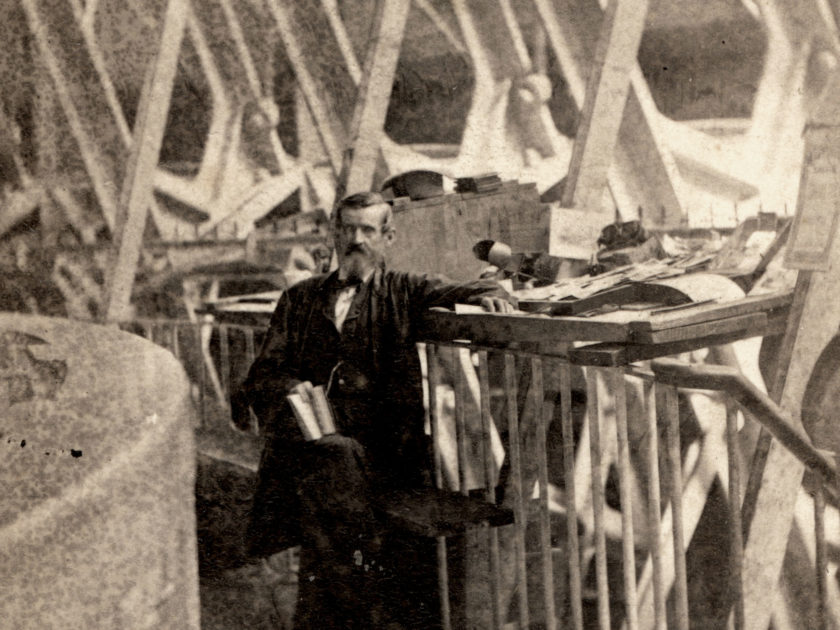Policeman John Patterson Gulick sits in the infrastructure of the U.S. Capitol dome with an open book on his knee and an arm resting on a worktable. On and around the table, familiar items connected to the production and art of photography.

Visible upon the table is a steroviewer, field glasses and paper prints. One of the prints is tacked to a support beam. Another beam in the foreground has a sign of some sort attached to it. Sitting atop a wood platform behind him is Gulick’s hat, and what may be holders for glass photographic plates. An empty box sits on the floor in front of the table.
The photographers that occupied this workspace are most likely one or both of the men credited with this portrait, William H. Bell and A.F. Hall. Their works include numerous exterior and interior views of the Capitol following the completion of the dome in 1865.
Gulick, born in Northumberland County, Pa., in 1810, took a scenic route to Washington. In the early 1840s, he made his way to White Pigeon, Mich., with stops in Illinois and Iowa. In Michigan, he married and started a family that grew to include eight children. A story from this period recalls farmer Gulick, on July 4, 1844, driving a combined reaper and thresher machine drawn by a 14-horse team. The vehicle rolled across the prairie with a liberty pole bearing the names of his choice for President and Vice President, Democrats James Knox Polk and George M. Dallas. “That day they cut and sacked twenty-eight acres of wheat with that machine,” the writer quipped.

The East Front of the Capitol, circa 1866. Library of Congress.
Gulick and his growing family left Michigan in 1846, and lived in Pennsylvania and Virginia’s Northern Neck prior to and during the early part of the Civil War. He spent at least five years as a policeman at the Capitol. One biographer lists him as a captain in the 16th New York Cavalry and a participant in the hunt for John Wilkes Booth after he assassinated President Abraham Lincoln. No evidence exists of Gulick’s military connection, though his duty as a police officer in Washington suggests he might have played a role in the manhunt.
In the early 1870s, Gulick and his family settled in Grand Junction, Iowa, where he became a hotelkeeper. He died in 1895 at about age 85.
LEARN MORE about Military Images, America’s only magazine dedicated to showcasing, interpreting and preserving Civil War portrait photography.
VISIT OUR STORE to subscribe, renew a subscription, and more.

